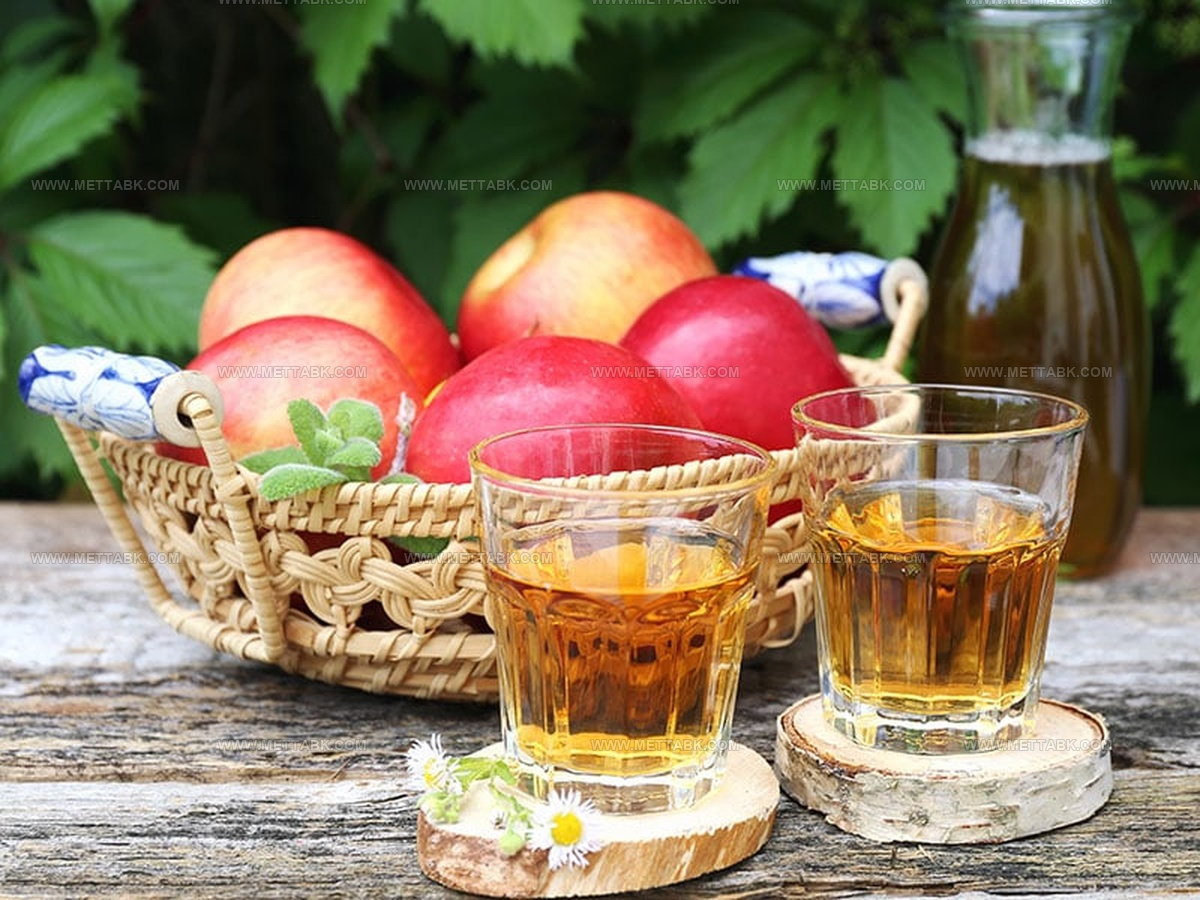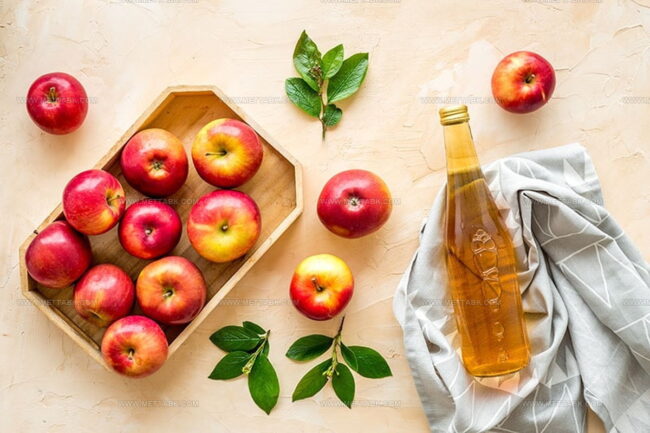Apple Cider or Vinegar: Which One Belongs in Pantry?
Apple cider drinks delight many people during fall months with their sweet, refreshing taste.
Classic beverages come from pressed apples and maintain a golden-amber color that captures autumn perfectly.
Meanwhile, apple cider vinegar takes that same juice in a completely different direction through fermentation.
The tangy liquid has gained tremendous popularity for its potential health benefits among wellness enthusiasts.
Many cultures have traditional uses for both products dating back centuries in cooking and home remedies.
The distinct flavors make them suited for entirely different purposes in kitchens worldwide.
Fans of both appreciate how these apple-derived liquids connect us to agricultural traditions while offering modern applications.
Read on to learn what makes each of these apple products special and how they can enhance your daily life.
The Overview of Apple Cider
Apple cider is a traditional beverage made by pressing fresh apples to extract their juice, which can be enjoyed either fresh or fermented. It holds a special place in many cultures as a seasonal drink, especially popular during autumn and winter months.
Apple cider has a rich history dating back thousands of years, believed to have originated in apple-growing regions of Europe such as England, France, and Germany.
It was initially made as a way to preserve surplus apples and enjoy their flavor throughout the year.
The drink gained particular popularity in colonial America, where apple orchards were abundant.
The core ingredients of apple cider are simple: fresh apples are pressed to release their juice.
Depending on the recipe or tradition, spices like cinnamon, cloves, nutmeg, and allspice may be added, especially in warm or spiced versions.
Hard Apple Cider Vs. Soft Apple Cider (Alcoholic Vs. Non-Alcoholic)
Many people find the terms hard and soft apple cider puzzling, but understanding their alcohol content makes everything clearer. Soft apple cider simply completes its journey after pressing, while hard cider continues through fermentation, becoming alcoholic as yeast converts sugar into alcohol.
The easiest method for creating alcoholic cider involves letting soft cider ferment naturally without sterilization or refrigeration. Interestingly, Americans typically associate "cider" with the sweet, non-alcoholic version, whereas Europeans generally mean the alcoholic variety when using this term.
What Makes Apple Cider Vinegar Truly Special?
Apple cider vinegar has ancient roots as a medicinal remedy, particularly in Western Europe where many used it for weight loss. Back in 400 BC, Hippocrates, known as the father of modern medicine, combined it with honey to treat respiratory issues like coughs and colds.
Making this tangy liquid involves fermenting apple juice over extended periods, or sometimes fermenting hard cider a second time with acetobacter bacteria that release acetic acid to speed up the process.
People worldwide value apple cider vinegar for its numerous health benefits compared to other vinegar types.
Apple Cider vs. Apple Cider Vinegar
Both apple cider and apple cider vinegar share nearly identical colors, but they're actually quite different drinks. Understanding these differences helps when recipes call for one or the other.
Here is a table to compare these two.
| Feature | Apple Cider | Apple Cider Vinegar |
| Overview | A beverage made from pressed fresh apples, either fresh (non-alcoholic) or fermented (hard cider). | A vinegar produced by fermenting apple cider, converting sugars into acetic acid. |
| Origin | Originated in Europe, popular in colonial America as a seasonal drink. | Also originated from apple cider fermentation, used historically for preservation and medicinal purposes. |
| Production | Press fresh apples to extract juice; can be consumed fresh or fermented to make alcoholic hard cider. | Produced by fermenting apple cider further, turning alcohol into acetic acid through bacterial fermentation. |
| Main Ingredients | Fresh apples, sometimes spices (cinnamon, cloves, nutmeg) for flavored cider. | Fermented apple cider containing acetic acid, water, trace minerals, and sometimes “the mother” culture. |
| Alcohol Content | Non-alcoholic (fresh cider) or low alcohol (hard cider, 4-8%). | Contains negligible or no alcohol (less than 0.5%) due to full fermentation into vinegar. |
| Flavor Profile | Sweet, fruity, and sometimes spiced; crisp and refreshing when fresh; stronger and tangier when fermented. | Sharp, acidic, and tangy with a sour bite; some raw versions have a cloudy appearance due to “mother.” |
| Common Uses | Consumed as a drink (fresh or hard cider), used in cocktails, cooking, and baking. | Used in cooking (salad dressings, marinades), natural cleaning, medicinal remedies, and skincare. |
| Health Benefits | Rich in antioxidants and vitamins from apples; hydrating and nutritious. | Known for antimicrobial, digestive, blood sugar control, and potential weight loss benefits due to acetic acid. |
| Storage | Refrigerate fresh cider; hard cider stored like alcoholic beverages. | Store at room temperature; keep sealed to preserve quality and prevent contamination. |
Production
Apple cider is produced by pressing fresh apples to extract juice. This juice can either be consumed fresh as a non-alcoholic beverage or fermented to make hard cider, which contains alcohol.
Apple cider vinegar is made by taking fermented apple cider and allowing a secondary fermentation process, where bacteria convert the alcohol into acetic acid. This process turns the cider into vinegar, which has a sharp acidic taste.
Main Ingredients
Apple cider mainly consists of fresh apple juice, sometimes enhanced with spices like cinnamon, cloves, nutmeg, or allspice, especially in warm or spiced versions.
Apple cider vinegar primarily contains fermented apple cider that’s rich in acetic acid, water, trace minerals, and may include the "mother" - a colony of beneficial bacteria and enzymes.
Therefore, apple cider can be non-alcoholic if fresh, but if fermented into hard cider, it typically contains 4-8% alcohol by volume. In contrast, apple cider vinegar contains negligible alcohol, usually less than 0.5%, since the fermentation converts almost all alcohol into vinegar.
Flavor Profile
Apple cider is sweet, fruity, and refreshing when fresh, with a crisp apple flavor. Fermented cider (hard cider) has a stronger, tangier taste.
Spiced cider offers warm aromatic flavors from added spices.
Apple cider vinegar has a sharp, tangy, and acidic flavor, often described as sour and pungent.
Raw, unfiltered vinegar may appear cloudy due to the "mother," and this adds to its complexity.
Common Uses
Apple cider is primarily consumed as a beverage - fresh cider is enjoyed cold or warm with spices, while hard cider is alcoholic and used in cocktails or cooking.
Apple cider vinegar is versatile: used in salad dressings, marinades, pickling, natural cleaning, skincare, and folk medicine for digestion and antimicrobial purposes.
Benefits
Apple cider provides antioxidants, vitamins, and hydration, benefiting general health through its nutrient content derived from apples.
Apple cider vinegar is reputed for its antimicrobial properties, potential to aid digestion, regulate blood sugar levels, promote weight loss, and improve skin health - mainly due to the acetic acid and beneficial bacteria.
How to Store Apple Cider and Apple Cider Vinegar
Apple cider (fresh) should be refrigerated to preserve freshness and prevent spoilage, while hard cider is stored like other alcoholic beverages.
Apple cider vinegar can be stored at room temperature in a sealed container, and does not require refrigeration due to its acidic nature preventing spoilage.
Shelf Life
Apple cider fresh cider generally lasts about 7-10 days when refrigerated; hard cider can last for several months unopened due to alcohol content.
Apple cider vinegar has a long shelf life and can last for years if stored properly in a cool, dark place.
How to Make Homemade Apple Cider and Apple Cider Vinegar
Check this guide on how to make homemade apple cider and apple cider vinegar step-by-step:
DIY Apple Cider
Ingredients:Instruction:DIY Apple Cider Vinegar
Ingredients:Equipment:Instruction:Optional secondary fermentation: Let it mature for another 3–6 months to deepen flavor.
Got Questions? We’ve Got Solutions
1. Can I substitute apple cider for apple cider vinegar in recipes?
No, they're not interchangeable. Apple cider is sweet and non-acidic while apple cider vinegar is very sour and acidic. Using one instead of the other would dramatically change your recipe's flavor and chemistry.
2. Which has more health benefits?
Apple cider vinegar is often credited with more health benefits, including potential aid in weight management and blood sugar control. Apple cider primarily offers hydration and some nutrients from apples.
3. How long do they last after opening?
Apple cider typically lasts 7-10 days refrigerated after opening. Apple cider vinegar can last for years even at room temperature due to its high acidity.
4. Can children consume both?
Children can safely drink apple cider in moderation. Apple cider vinegar should be diluted if given to children, as its acidity can damage tooth enamel and irritate throats when consumed straight.




Nate Harper
Founder & Recipe Curator
Expertise
Single-Recipe Development, Farm-to-Table Cooking, Seasonal Menu Planning, Culinary Storytelling, Home Kitchen Innovation
Education
Cascade Culinary Institute – Central Oregon Community College
Certificate in Culinary Arts
Focus: Farm-to-table cuisine, sustainable cooking practices, and seasonal recipe creation.
Nate studied under experienced chefs who emphasized local sourcing, minimal waste, and building recipes from fresh, simple ingredients.
Nate Harper is the founder and creative force behind Make, Take, Bake. Raised in the wild beauty of Oregon’s high desert, Nate grew up surrounded by family gardens, farmers’ markets, and home kitchens that celebrated the seasons.
His early love for simple, honest food evolved into a professional passion when he attended Cascade Culinary Institute, where he sharpened his skills in creating recipes that are sustainable, satisfying, and made for everyday life.
Nate’s goal is to make cooking feel accessible, free of fuss, and full of flavor. He believes a single, thoughtfully built dish can stand alone, and sometimes even steal the show.